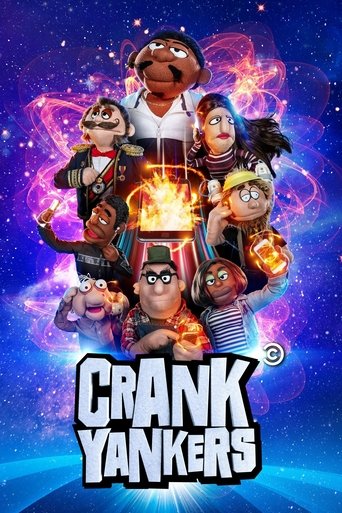

The puppet people are also amazing they can put together any kind of puppet as quick as you want and throw it up on a green screen. Jon Kimmel, who runs the whole show and basically directs everything this season, is really good with that. Since you were on the stage, could you get punch-in shots whenever you wanted, since in theory, all you need is just a puppet? That’ll be a green screen there and I know a shot we can put in the background that’s going to work,” which was nice to get a feel for what was coming up a day or two in advance of when it’ll all be synced, logged, and ready for us to work on. If we wanted to, we could just walk right in and watch what was being shot and go, “Yeah that’ll work, we can frame that up. Last season, we were actually in little rooms off of the stage. How have things changed with Covid? I imagine it’s probably a little different for your show since it was never shooting actors but puppets. Usually, they’re fairly well blocked out because you don’t have to have the same actor too close together in back to back episodes unless it’s Jimmy Kimmel, he can go anywhere he wants. Last year, we did some special YouTube videos with a split screen but we’ve done nothing like this before.Īs far as the breakdown goes, there are two editors that work on the show and we split up the calls where we prioritize the ones we think are going to go in the early episodes. We were able to pop those in at any point during the call, like VH1’s Pop-Up Video.

And this year, since every actor and actress was doing calls from home, we have Zoom videos of their faces.

There are also usually a lot of small VFX moments or split screens to make sure everything is timed exactly how we want. Once all the footage is brought in we have our main call audio on the bottom and every take on top of that and jump back-and-forth between the two. Last season, (season 5) we used Avid but felt Premiere might work better for the remote workflow. That’s what is used to record the puppets lip syncing the same call track over and over again from anywhere from four to 20 different angles. We get the call first, which can be pretty long, and then a “call editor,” who is different from the picture editors, chops it down to around four minutes. What is the Crank Yankers workflow like? Do editors get their hands on the raw phone call audio or video if there is any? Are you assigned episodes or sketches?
#CRANK YANKERS CAST HOW TO#
The problem of how to make something work is always a fun one to work on. It’s like putting a puzzle together, which was always really fun for me. I always felt like a more visual person and editing is storytelling with visuals. Then editing came up again, and I liked editing. In film school, I jumped into all different kinds of stuff thinking maybe I would try to be a DP or director. Of course, nobody should have been doing Jackass stuff, but that’s what drew me to editing. So to prevent these tapes from ending up in people’s closets, I jumped in saying we need to digitize them and cut it in a way we can watch over and over again. ” Then, when it came to watching it later, nobody knew what to do. Jackass was a big thing in our friend group, so a lot of people were like, “I have a camera, let's do this or let’s do that. I guess it started in high school, kind of out of necessity of people just wanting to make movies.
#CRANK YANKERS CAST TV#
What initially drew you to post production? Was there a “gateway drug” film or TV show that started your passion specifically for that side of the industry? The following has been condensed and edited for clarity. He is currently an editor on Crank Yankers, credited on all 20 episodes of season 5 and is slated to do the same for season six.

He then transitioned to narrative television as an assistant editor on shows like American Vandal, Who Is America, and Brockmire. Getting his start editing and coloring, Daucsavage worked on nearly 100 national commercials and hit music videos for the likes of Bazzi, X-Ambassadors, Lindsey Stirling, Jackson Browne, Foxygen, and Limp Bizkit. Peter Daucsavage’s experience is vast, working in a multitude of different post production arenas. “I always felt like a more visual person and editing is storytelling with visuals.


 0 kommentar(er)
0 kommentar(er)
